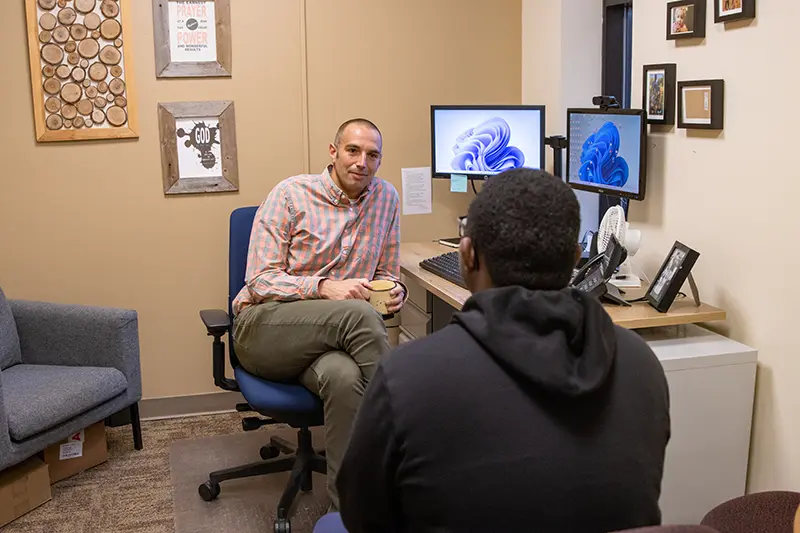-
-
- Financial Aid
- Financial Aid
- Scholarships
- Loans
- Grants
- Federal Work Study
- Additional Resources
-
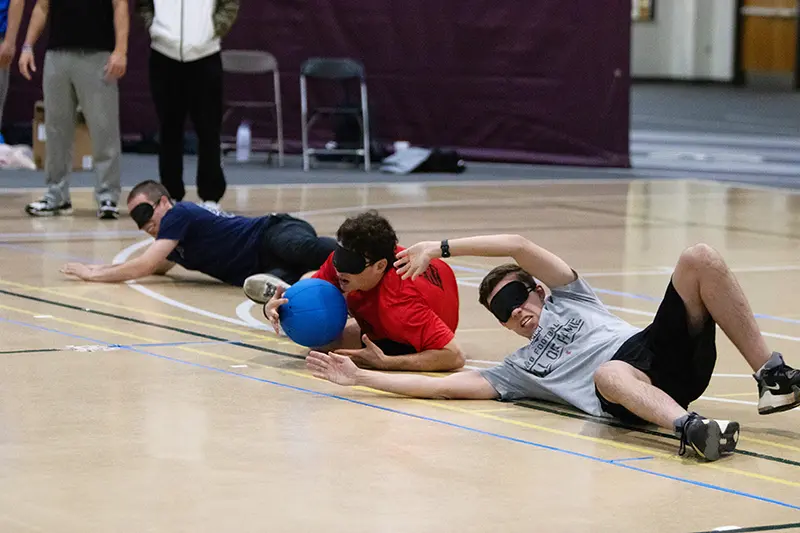
When Nate Taylor ’28 first toured Taylor University, he was looking for what most prospective students want—excellent academics, the opportunity to meet new people, and a lively community to participate in. After coming to campus for a visit, he was sold. Yet, one unique feature made his transition to college different than most.
Born with neurofibromatosis, a rare genetic condition that caused tumors in his optic nerves, Taylor became completely blind at the age of 1. Growing up, he attended several public schools and graduated from the Indiana School for the Blind and Visually Impaired (ISBVI).
Entering his freshman year at Taylor University in fall 2024, “everyone just welcomed me in and wanted to know more about me,” Taylor shared. “Everyone has allowed me to participate in as much stuff with them as I can. It’s been the school that I’ve felt the most accepted in.”
Residence hall retreats, group ice skating, and late-night McDonald’s runs have been a few noteworthy memories. But by far, his favorite highlight was introducing goalball—the most popular team sport for the blind and visually impaired—to campus.
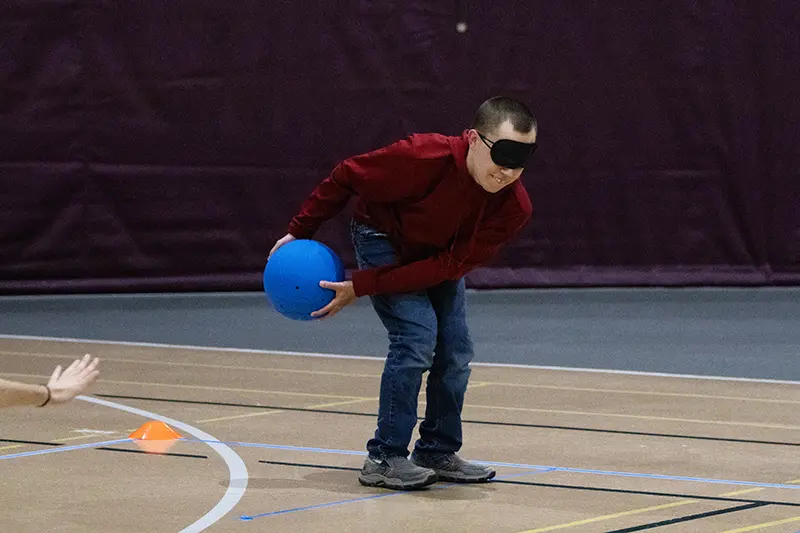 Nate Taylor
Nate Taylor
When Dr. Scott Barrett, Assistant Director of the Academic Enrichment Center and Coordinator of Accessibility & Disability Resources, was working with Taylor to prepare for his freshman year, he asked what sports he had been involved in. In addition to beep baseball and track, Taylor had been a member of the goalball team at ISBVI.
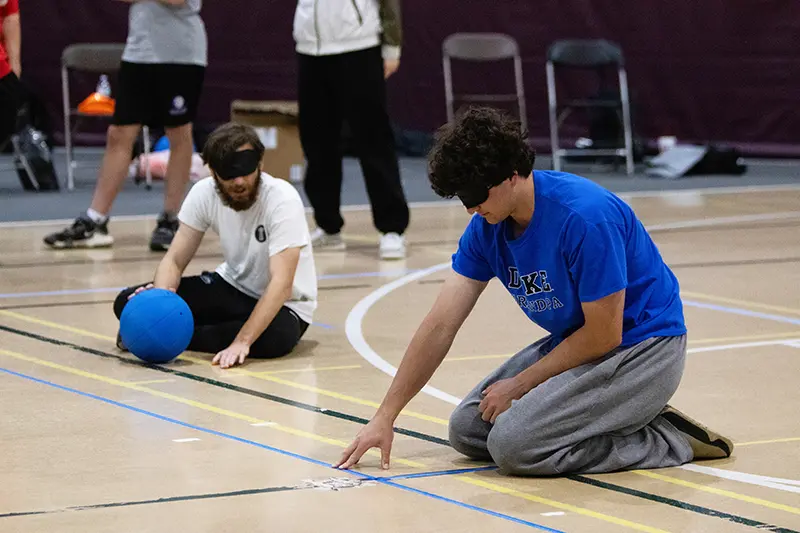
Goalball involves two teams of three players who face each other on either side of the court. Athletes wear eyeshades, and each team takes turns rolling a basketball-sized rubber ball containing bells towards the other team. Players rely on their hearing to move across the court and use their bodies to block the ball from rolling past their own team’s goal line. When a team successfully stops the ball, they take possession and become the offensive team.
The game is split into two 12-minute halves. A team wins by scoring more points within the timeframe or surpassing the opposing team by 10 points at any time during the match.
The boundary lines are created with taped string so players can feel them on the court, and the venue is completely silent to allow the athletes to react to the ball. Goalball was first introduced to the Paralympic Games in 1976. Today, men’s and women’s teams compete internationally.
Partnering together, Barrett and Taylor Student Organization organized a day to play goalball on campus. Thirteen students spent a Saturday afternoon playing goalball.
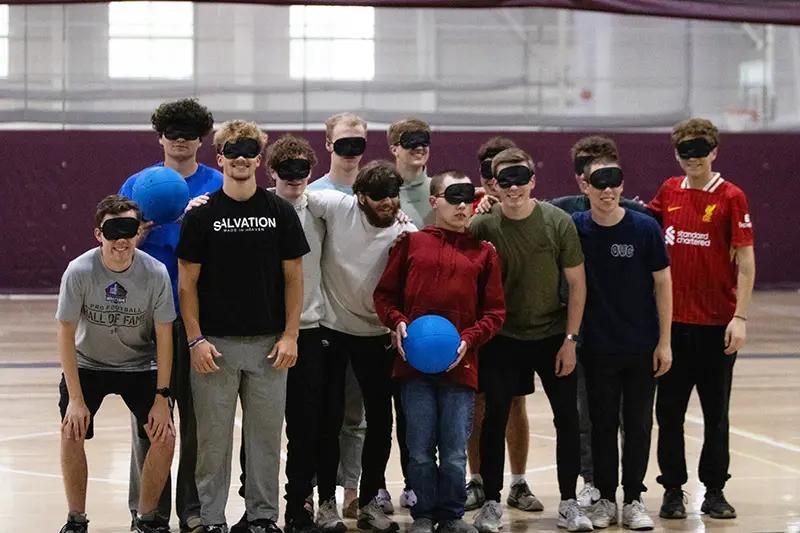
“It was really cool to bring people together and teach them a sport that they may have not heard of,” Taylor shared. “And it was really cool to teach them my experience with sports.”
Students described playing goalball as different than other sports they had played before but just as fun.
“It can be really hard for people to understand what it’s like to be visually impaired,” said Dayton Molendorp ‘27, a floormate of Taylor. “Playing a game like goalball can kind of put in perspective what Nate experiences, and we can all come around him and support him in such a fun and loving way.”
Majoring in Public Relations with a concentration in Marketing and Sport PR as well as a minor in History, Taylor has worked closely with Barrett to create an accessibility plan for his academics.
“Of all the schools that I’ve met with for accessibility, Taylor University has been the best,” Taylor shared. “They look to hear your needs then tell you what they can do and what might be challenging, and they’re willing try things out.”
When Taylor began as a student, he talked with Barrett about the possibility of having a braille embosser on campus. This impact printer renders text as tactile braille cells. In fall 2024, the University was able to secure one.
In addition, Taylor utilizes a BrailleNote Touch, which is a dynamic braille device that connects to his computer and translates printed text to braille and vice versa. It allows him to send documents to professors directly. Additionally, Bookshare is a digital library that provides textbooks in braille format.
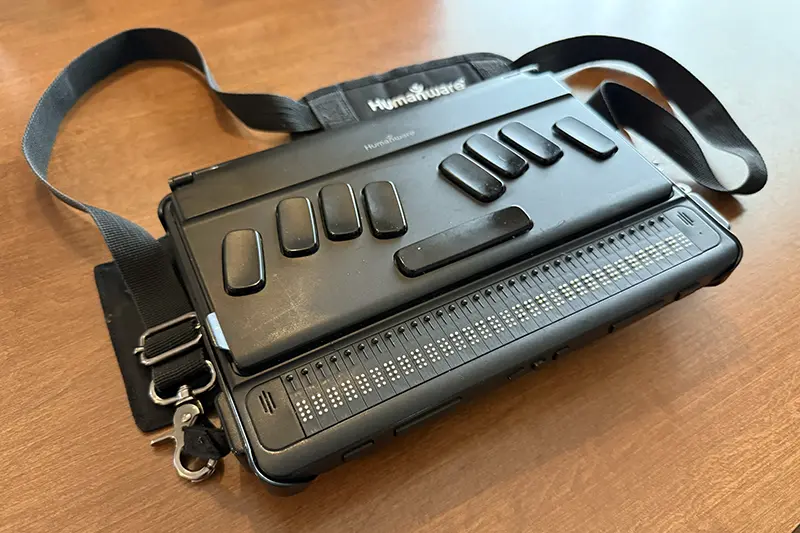 BrailleNote Touch
BrailleNote Touch
The Academic Enrichment Center (AEC) exists to help all students succeed academically and holistically during their time at Taylor University. Disability-related accommodations are designed to provide equal access to educational programs and opportunities. In addition to this, the AEC seeks to foster self-awareness, self-advocacy, and self-appreciation in students.
“We believe that we are called to know one another, and this involves understanding each other’s experiences. When we’re willing to try new things and embrace our differences. This is part of what makes Taylor University a place where everyone can find belonging,” Barrett said.
